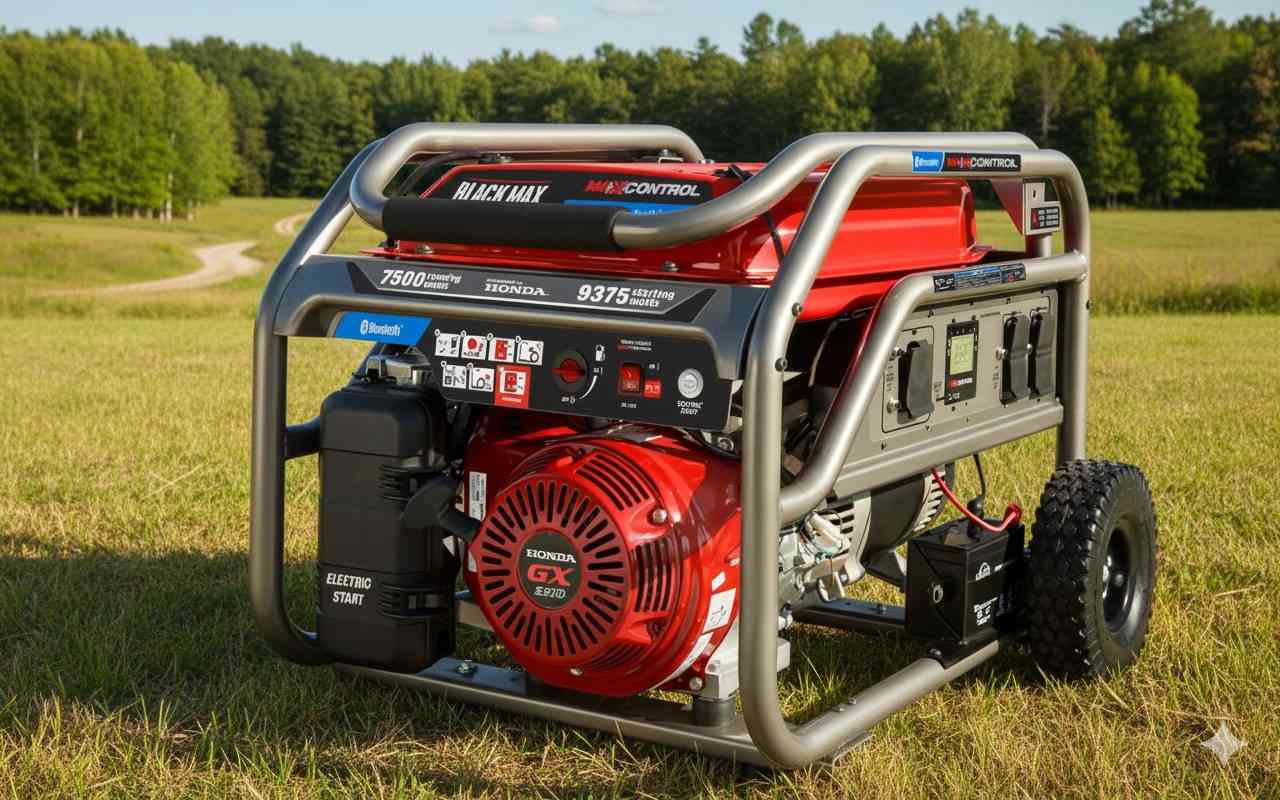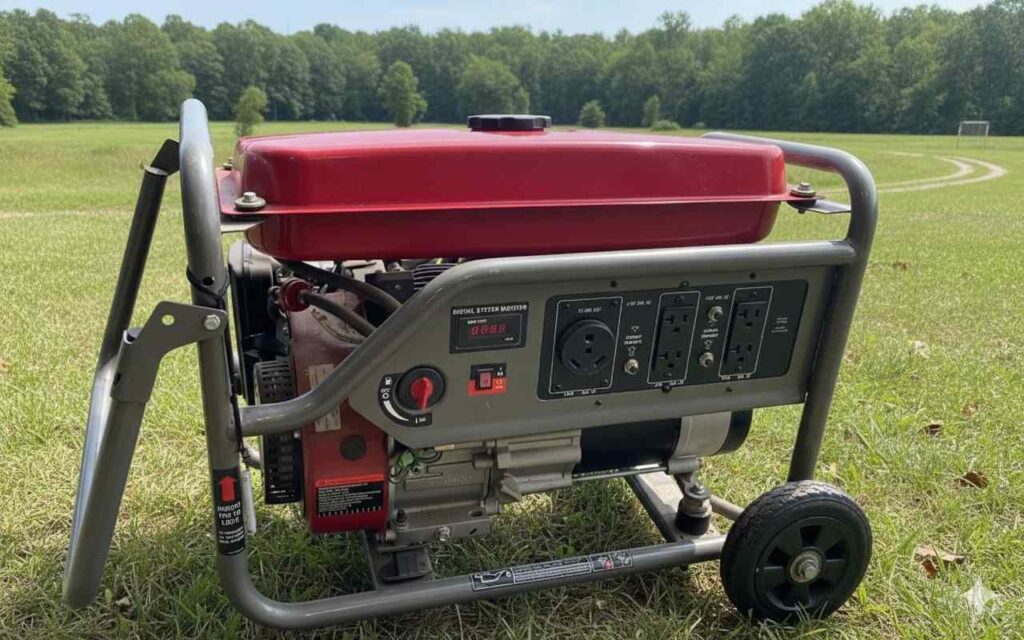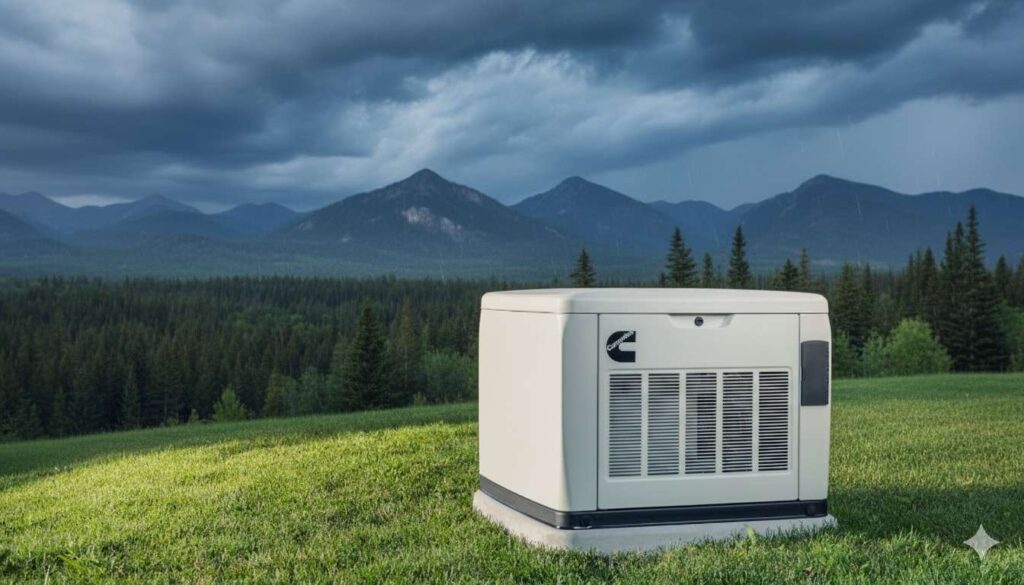Physical Address
304 North Cardinal St.
Dorchester Center, MA 02124
Physical Address
304 North Cardinal St.
Dorchester Center, MA 02124

Owning a generator can be a lifesaver during power outages, but like any machine, it may face issues over time.
In this guide, we’ll explore 10 common Black Max Generator problems and their simple fixes.
Whether it’s trouble starting or unusual noises, we’ll help you keep your generator running smoothly with easy-to-follow solutions.
Black Max generators can face issues like difficulty starting, low power output, or strange noises.
These problems are often caused by a clogged air filter, old fuel, or loose connections.
Don’t worry most of these issues have quick fixes with basic tools and a little effort!

Causes:
The most common reasons for a non-starting generator include an empty fuel tank, a closed fuel valve, or stale fuel that has lost its combustibility.
Other culprits could be a disconnected spark plug, a depleted battery (on electric start models), or a low oil level, which activates the low-oil shutdown sensor to protect the engine.
Fixes:
First, confirm there’s fresh gasoline in the tank and that the fuel valve is in the “ON” position. If the fuel is old, drain it and refill with new gasoline.
Next, check that the spark plug wire is securely connected to the spark plug.
For electric start models, ensure the battery is fully charged. Finally, verify the oil level is sufficient; add more oil if it’s low.
Read Also: 10 Common Cummins Standby Generator Problems & Fixes

Causes:
A rough-running engine is often caused by a clogged carburetor, which happens when old fuel leaves sticky deposits.
A dirty or clogged air filter can also restrict airflow, disrupting the fuel-to-air ratio and causing the engine to sputter.
Similarly, a dirty or fouled spark plug may fail to ignite the fuel mixture consistently, leading to uneven operation.
Fixes:
Start by inspecting and cleaning the air filter; replace it if it’s excessively dirty or damaged. If that doesn’t solve the problem, the carburetor likely needs cleaning.
You can use a carburetor cleaning spray to dissolve varnish and deposits. If the issue persists, you may need to remove and thoroughly clean the carburetor.
Also, check and clean the spark plug, or replace it if it shows signs of heavy wear.
Causes:
This issue is often caused by a tripped circuit breaker on the generator’s control panel, which can happen if you overload the unit.
Another common culprit is a faulty Automatic Voltage Regulator (AVR), the component responsible for maintaining a steady voltage output.
Worn-out carbon brushes, which are essential for conducting electricity within the alternator, can also be to blame.
Fixes:
First, check the circuit breakers on the control panel and reset them if they have tripped.
If the breakers are fine, the AVR might need replacement, a task that is often best left to a qualified technician. You can also inspect the carbon brushes for wear.
If they are worn down to their limit lines, they will need to be replaced to restore power output.
Causes:
Overheating is frequently caused by a low oil level, as oil is crucial for lubricating and cooling the engine’s internal parts.
A dirty or blocked air filter can also contribute by restricting the flow of cool air needed to regulate engine temperature.
Running the generator in a poorly ventilated area or placing it too close to walls can also trap heat and cause it to overheat.
Fixes:
Turn off the generator and let it cool down completely.
Once cool, check the oil level and add the correct type of oil if it’s low. Inspect the air filter and clean or replace it if necessary.
Ensure the generator is operating in a well-ventilated, open area with at least five feet of clearance on all sides to allow for proper airflow and cooling.
Causes:
Black smoke typically means the fuel mixture is too rich, often due to a clogged air filter or a malfunctioning carburetor choke.
Blue or white smoke usually indicates that the engine is burning oil, which can be caused by overfilling the crankcase with oil, worn piston rings, or failing valve seals.
Fixes:
For black smoke, start by cleaning or replacing the air filter. If that doesn’t work, check the carburetor’s choke to ensure it’s not stuck in the closed position.
For blue or white smoke, first check the oil level. If you’ve overfilled it, drain the excess oil.
If the oil level is correct but the problem continues, the engine may have internal wear, requiring professional service.
Causes:
A loose or damaged muffler is a common cause of increased exhaust noise.
Internal mechanical noises, such as knocking or rattling, could point to more severe issues like worn engine bearings, a damaged piston, or other failing internal components.
Loose mounting bolts can also cause the generator to vibrate excessively, creating extra noise.
Fixes:
First, inspect the muffler and its mounting bolts to ensure everything is tight and secure.
If the muffler is damaged or rusted through, it will need to be replaced.
If the noise is a deep mechanical knocking sound, shut the generator off immediately and consult a professional technician, as this often indicates serious internal engine problems that require expert repair.
Causes:
Fuel leaks are often caused by cracked or deteriorated fuel lines, which can become brittle over time.
A faulty carburetor float bowl gasket or a stuck float needle can also cause fuel to overflow from the carburetor.
Another potential source is a damaged or improperly sealed fuel tank or a loose fuel filter connection.
Fixes:
Carefully inspect the entire fuel system, starting from the tank and moving to the carburetor.
Check all fuel lines for cracks or signs of wear and replace them if they are damaged.
If the leak is coming from the carburetor, you may need to replace the bowl gasket or clean the float needle assembly.
Do not operate the generator until the leak is fully repaired.
Causes:
The most common cause for an unexpected shutdown is a low oil level, which triggers the low-oil shutdown sensor to protect the engine.
Overloading the generator by plugging in too many high-wattage appliances can also trip the circuit breakers and shut down the unit.
Additionally, a clogged fuel cap vent can create a vacuum in the fuel tank, starving the engine of fuel.
Fixes:
First, check the engine oil level and add more if needed.
Review the wattage of the devices you are running and ensure you are not exceeding the generator’s rated capacity.
Try running fewer devices to see if the problem resolves. Lastly, check the fuel cap to ensure the vent is clear and allows air to enter the tank.
Causes:
A battery that drains quickly may simply be old and at the end of its life, as all batteries degrade over time.
Another cause could be a faulty charging system (alternator) on the generator that is failing to recharge the battery while the engine is running.
Corroded or loose battery terminals can also prevent a proper connection and inhibit charging.
Fixes:
Start by cleaning the battery terminals with a wire brush to ensure a clean, tight connection. Try charging the battery with an external charger.
If it fails to hold a charge, the battery likely needs to be replaced.
If a new battery also drains quickly, the generator’s charging system may be faulty and will require professional inspection and repair.
Causes:
The recoil spring inside the starter assembly can become tangled, rusted, or broken, preventing the rope from retracting or being pulled out.
Sometimes, the issue is caused by engine lock-up, where pressure has built up in the combustion chamber, making it difficult to turn the engine over.
This is often known as a hydrostatic lock if fuel or oil has leaked into the cylinder.
Fixes:
First, try to rule out engine lock-up by removing the spark plug and then pulling the cord.
If the cord now pulls freely, the engine was likely the issue. Reinstall the spark plug and try again. If the cord is still stuck, the recoil starter assembly itself is the problem.
You will need to carefully disassemble it to inspect, untangle, or replace the spring and rope.
A new generator may not produce power if the circuit breakers are off or if the AVR (Automatic Voltage Regulator) was disconnected during shipping.
Check that all breakers are in the “ON” position and consult the manual for AVR troubleshooting.
It’s recommended to change the oil after the first 20-30 hours of use for a new generator.
After that, change the oil every 100 hours of operation or at least once a year, whichever comes first.
No, you should never use old gasoline. Fuel older than 30 days can go stale and create varnish deposits that clog the carburetor.
Always use fresh fuel and a fuel stabilizer if you plan to store it for an extended period.
Overloading a generator will cause its circuit breakers to trip, shutting off the power output to protect both the generator and your appliances.
Simply unplug some devices to reduce the load and then reset the breakers.
It is not safe to run a generator in the rain or wet conditions without proper protection, as it creates a risk of electrocution and can damage the unit.
Use a specially designed generator tent or cover to keep it dry if you must operate it in bad weather.